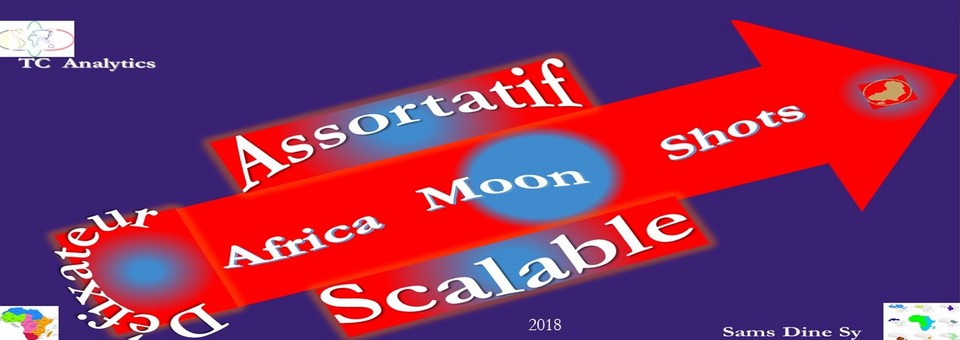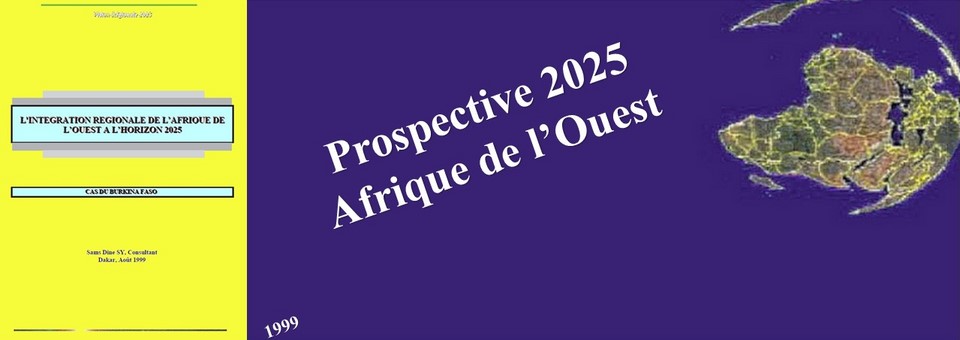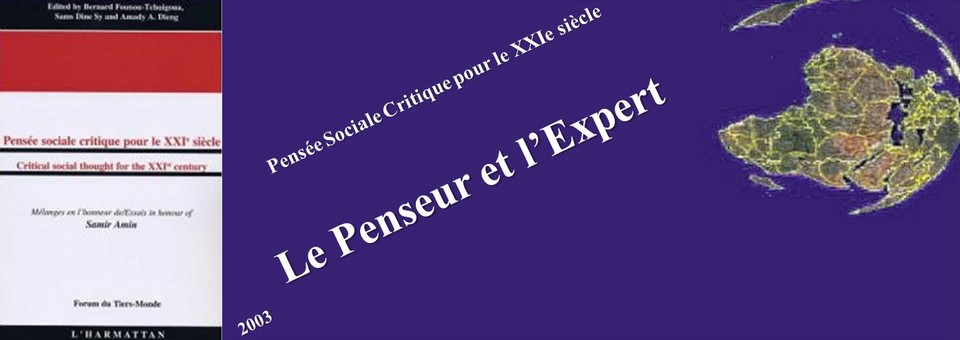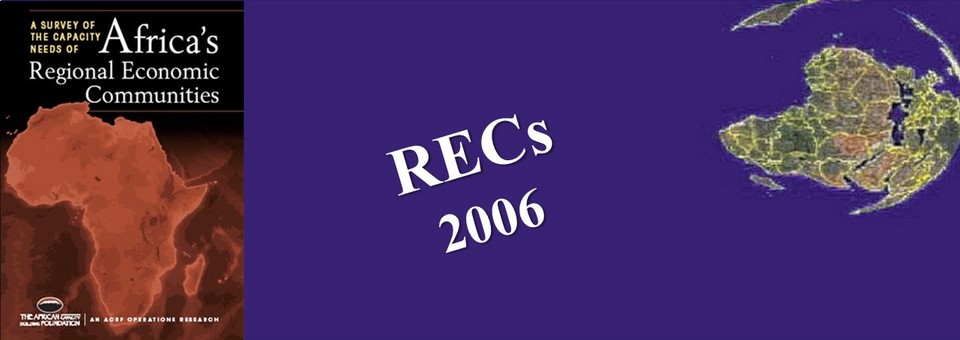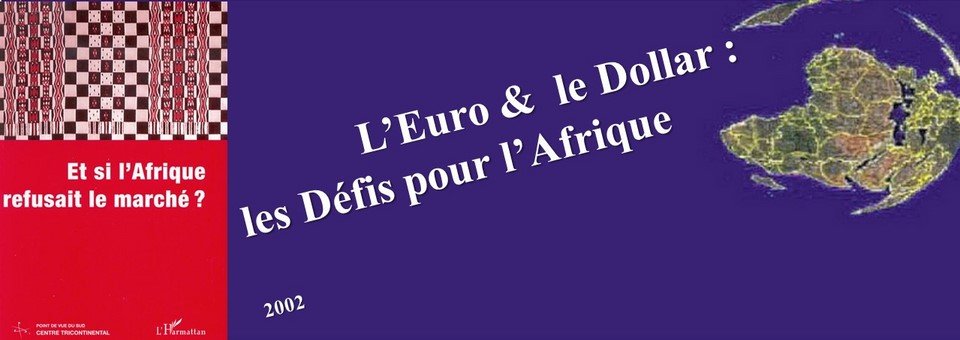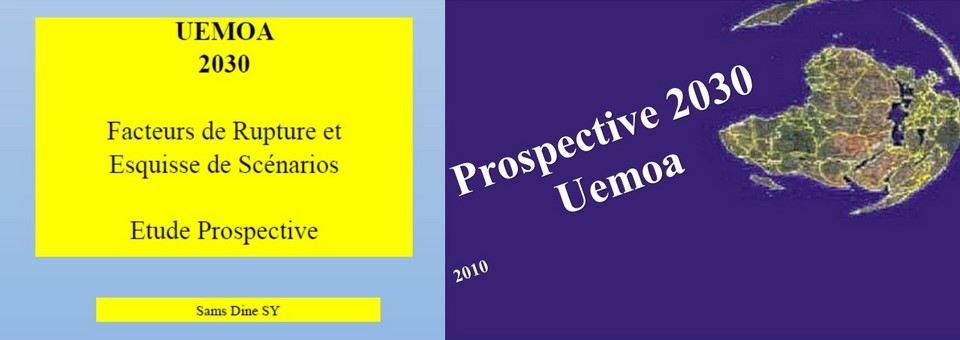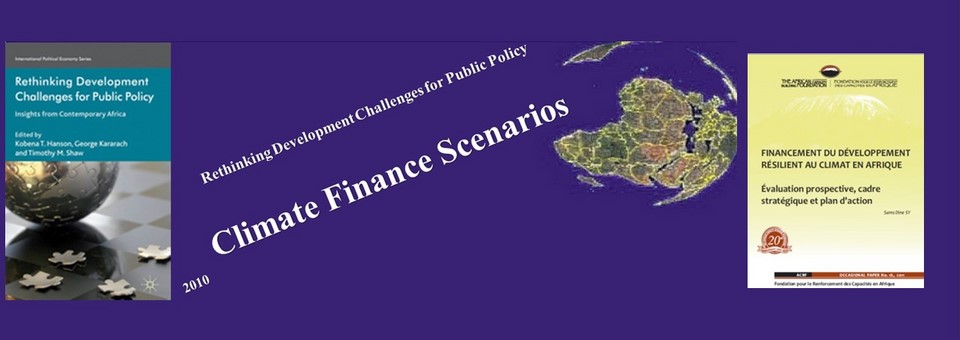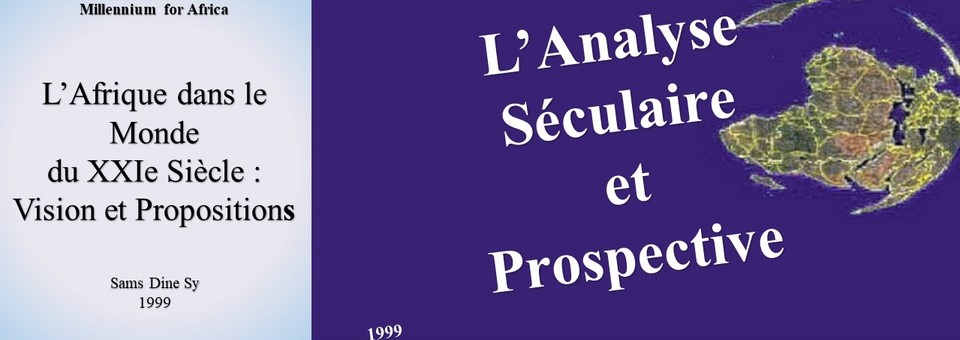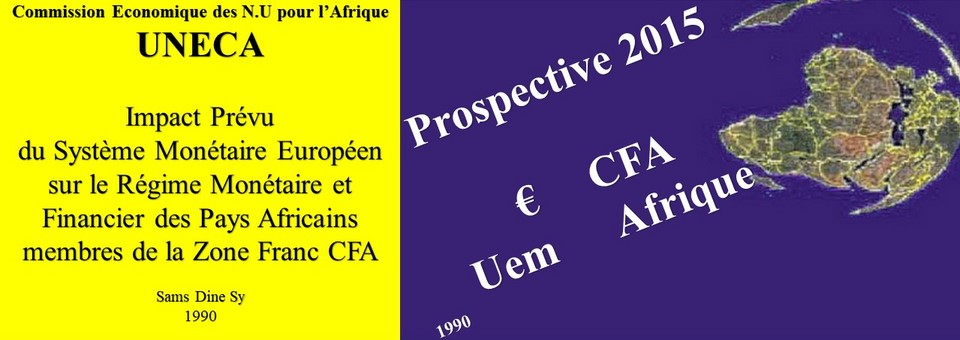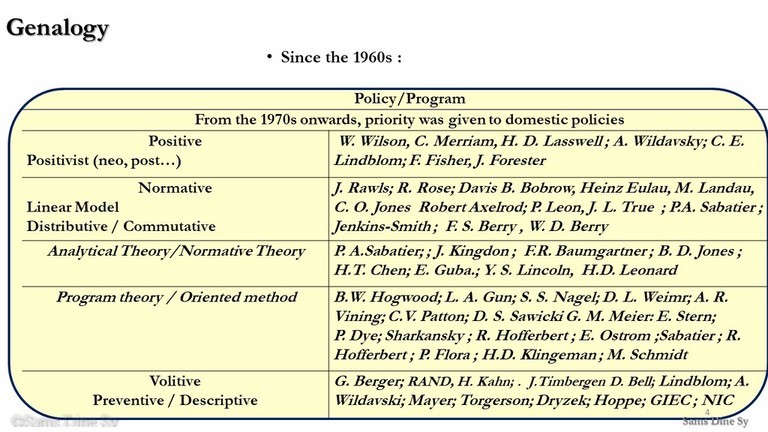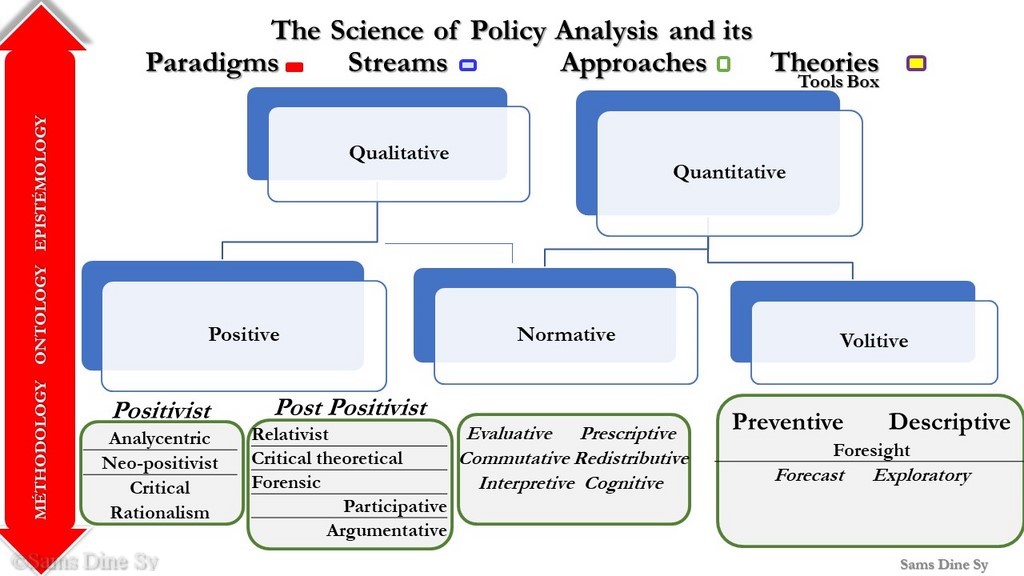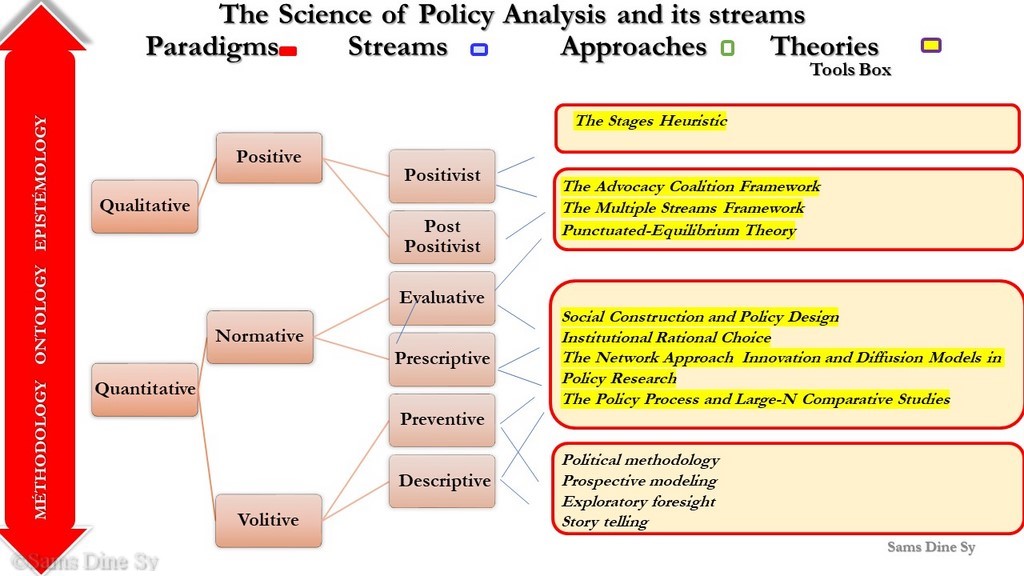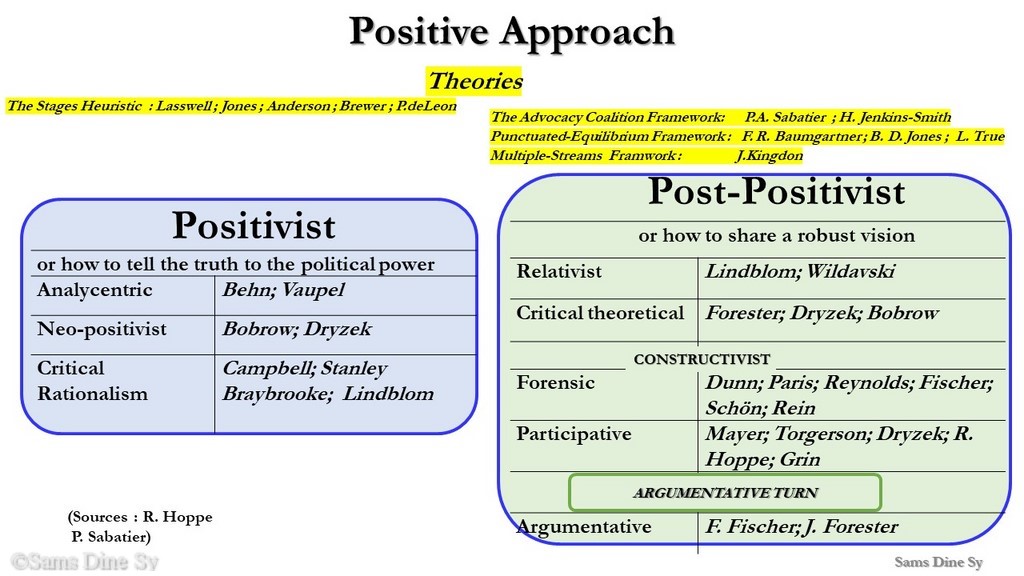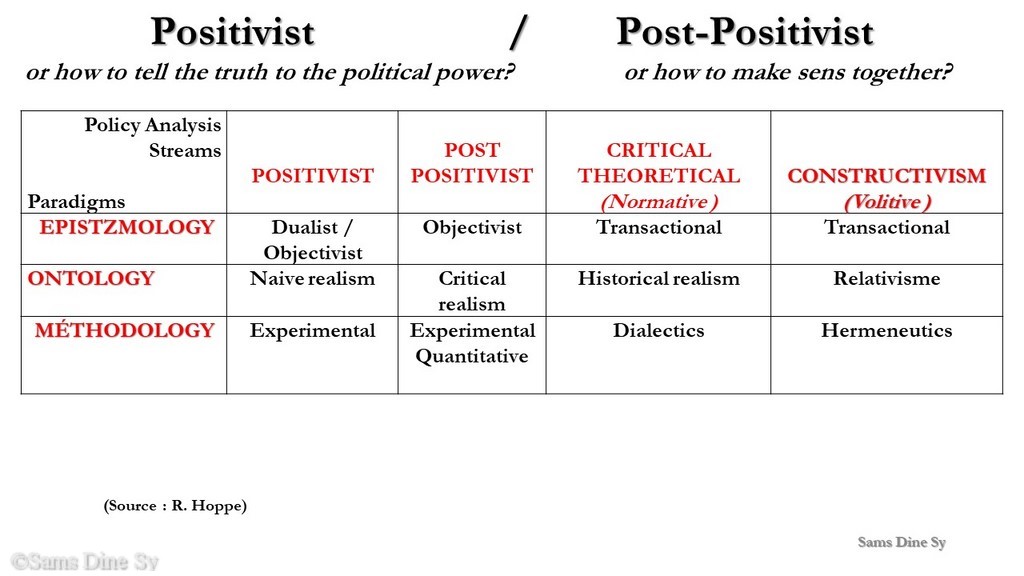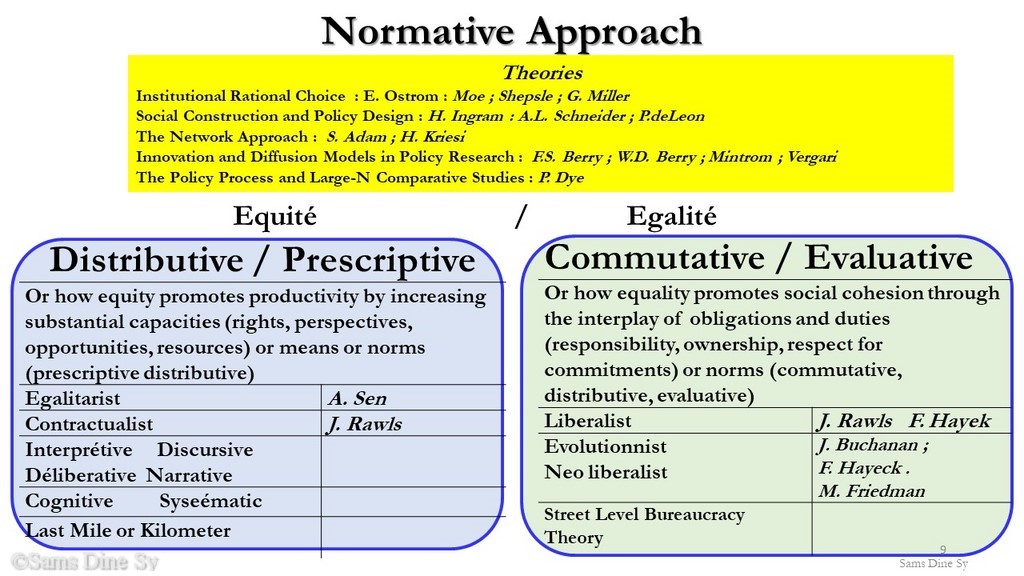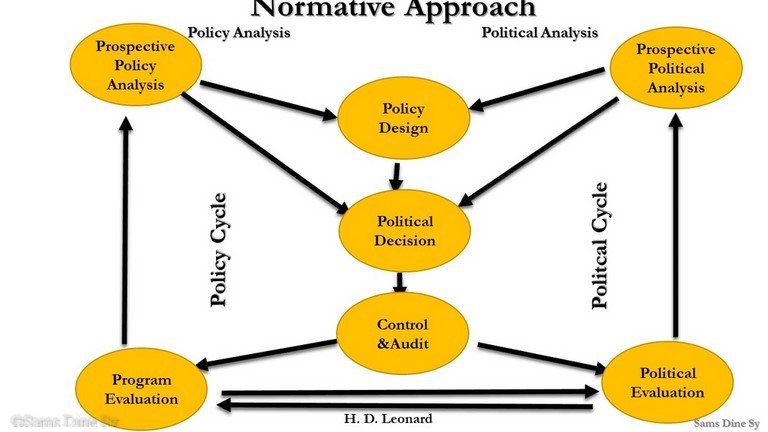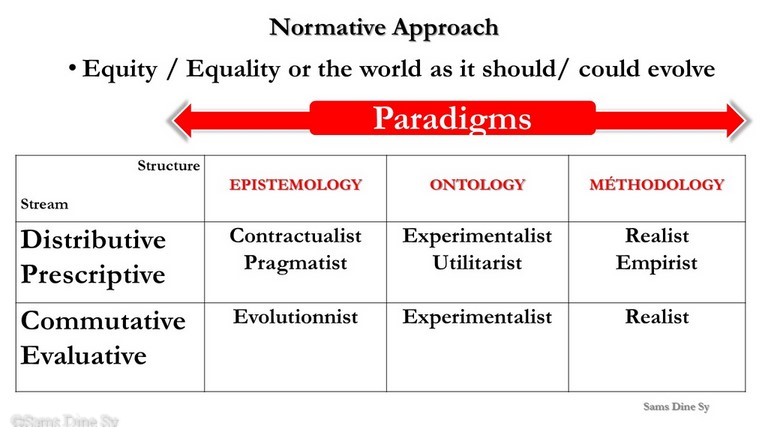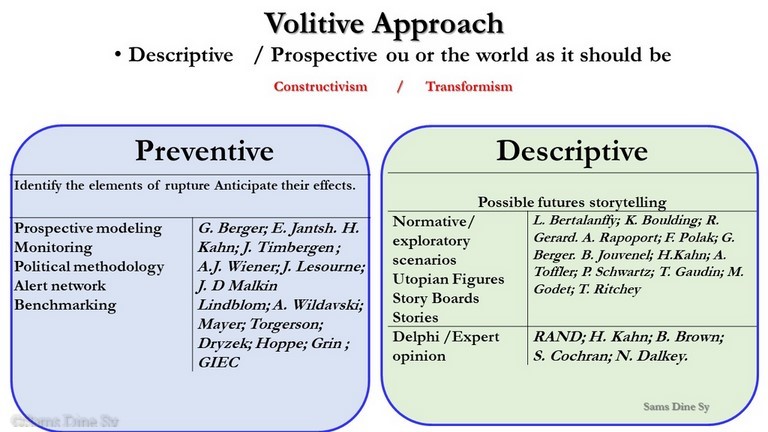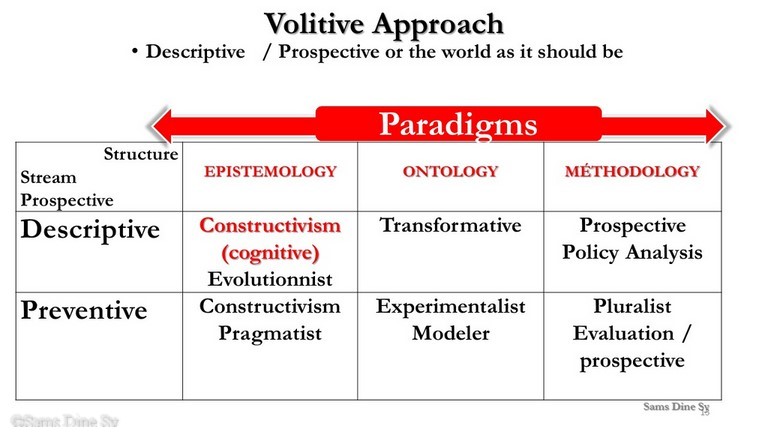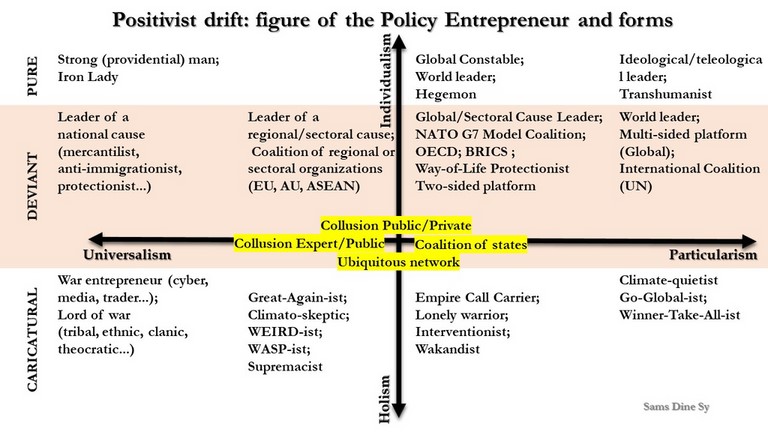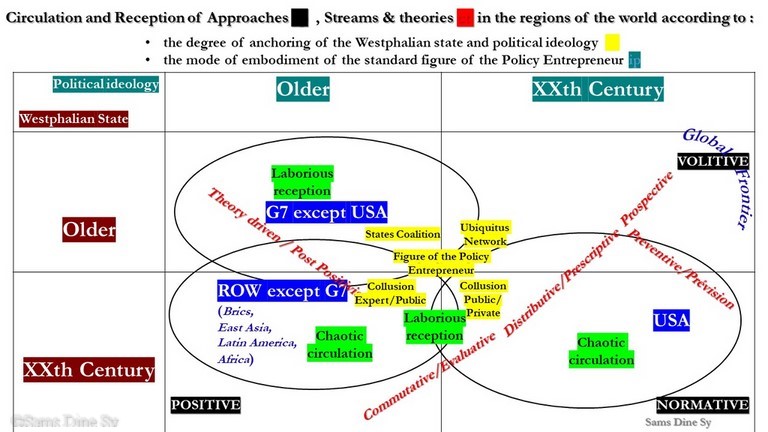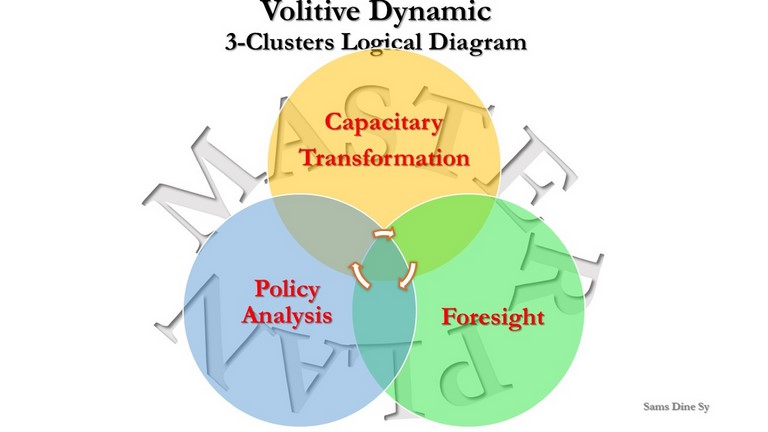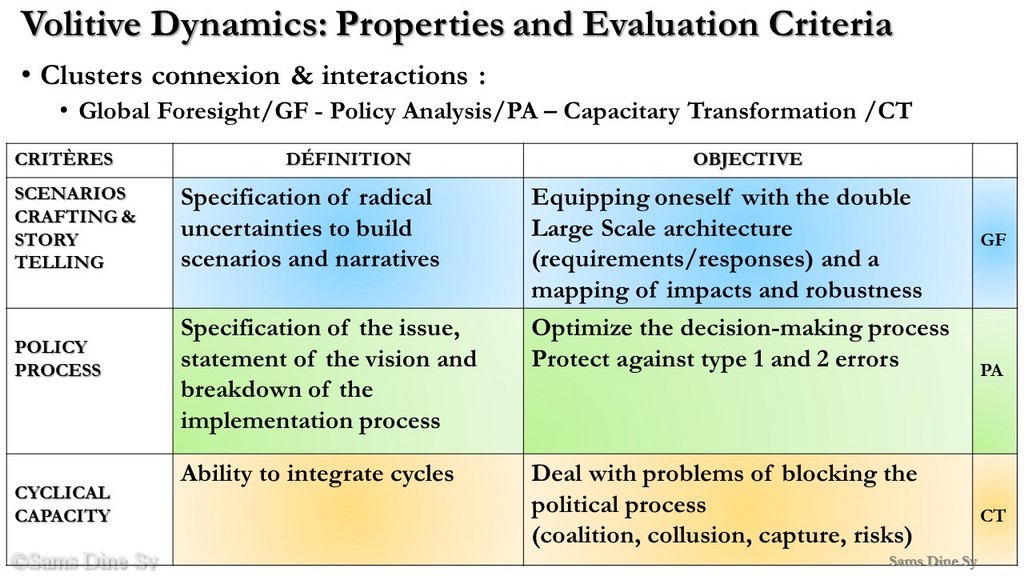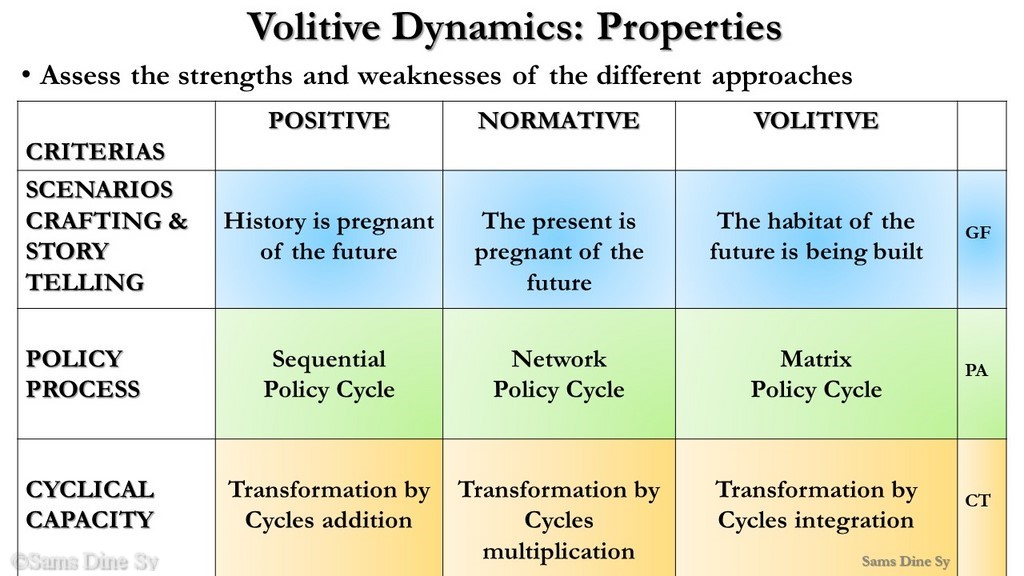AFRICA'S CAPACITARY TRANSFORMATION
Policy Analysis ScienceThe Federal State in search of experimental science
Policy Analysis Science
METHOD
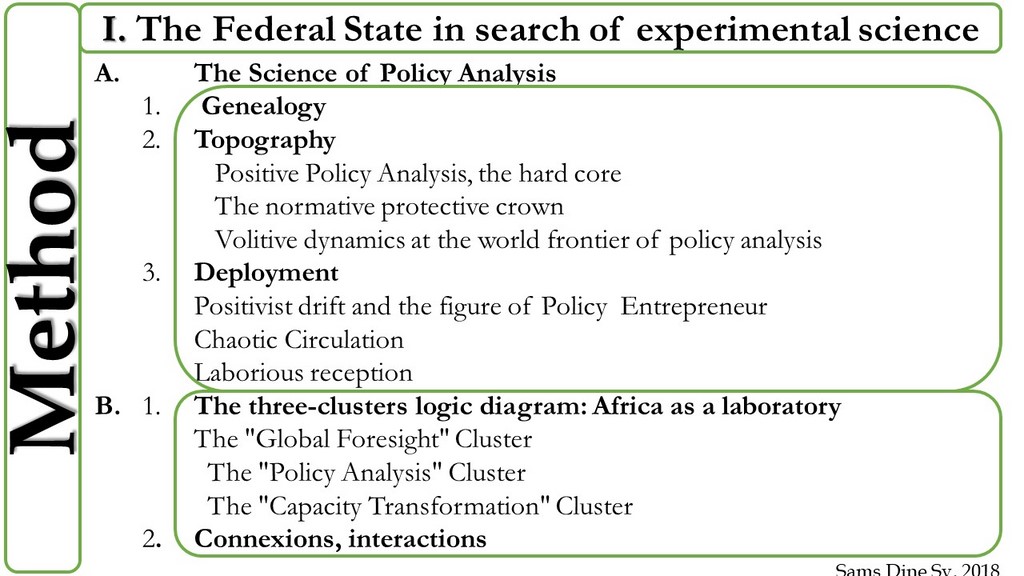
I. The Federal State in search of experimental science
A. The Science of Policy Analysis
1. Genealogy
The science of policy analysis is an applied research discipline focused on state activity. The production of public policies has been nourished by the work of great thinkers, from Plato to Auguste Comte, Bacon, Saint Simon, Hegel. But while state action is the central focus of policy analysis, other disciplines have invested in specific or cross-cutting issues. Thus, beyond philosophy and political sociology, almost all sciences and technologies have taken possession of this object to mark its territory: geopolitics, biopolitics, political economy, political history, public management, political engineering, political ecology, political development, political innovation, political studies, political anthropology, political communication, political marketing, political methodology, political religion, forensics (non-exhaustive list).
The science of policy analysis was built as the Westphalian state (1648) in Europe spread throughout the world, especially after the great wave of decolonization. It has been tossed around over the centuries between national/dynastic and imperial/industrial causes, and only from the second half of the 20th century onwards did it experience this rapid expansion in the United States. The federal state institutionalized it in the mid-1970s in an administration in search of the capacity to formulate and implement good policies, unlike the Westphalian European philosophical tradition of power, which derives its legitimacy from the exercise of public power through the distribution of authority and control over the public service.
Meanwhile, the number of nation-states has quadrupled in the last century alone, all more committed to the principle of sovereignty than others - a belief that has become so sacred that any abandonment of a crumb is tantamount to treason (E. Lazlo). Nevertheless, the validity of this principle is constantly challenged by factors that affect the legitimacy of public intervention: strategic interdependence and shocks, integration and mobility, technological disruptions and extreme events.
Claiming to be an experimental science, the hard core of policy analysis first claimed to "tell the truth to the public authorities" based on a positivist epistemology and a neutral and scientific method. The normative approach was the protective crown, especially during years of crisis, disillusionment and delegitimization of the figure of the ubiquitous political entrepreneur.
What has emerged over time as a positivist drift, has given rise within or at the margin of the discipline to a multitude of currents and theories which, without undermining the hard core, have tried to "make sense together". Faced with this ambition, which requires integrating both long time and global space into public decisions, the positivist current shows its limits. This requirement triggers the volitive dynamics that now constitutes the frontier of policy analysis where different producers of meaning coexist, all relying on a prospective approach, sometimes normative and preventive, to combine it with the positivist hard core, sometimes exploratory and global, to prepare for the advent of the post-Westphalian state and draw up the Master Plan.
I
I
2. Topography
Drawing up an inventory or the topography of paradigms and trends in policy analysis is a challenge. A brief review of the conditions of his birth, however, provides a better understanding of his future in increasingly complex and globalised societies. Without going back to the Greek period when polis was united to sacredness (A.J. Heidenheimer), the origins of policy analysis lie in the cameralist sciences, developed within the first universities responsible for training civil servants in the still relatively homogeneous European framework and governed by the Westphalian order.
The use of the scientific community in the name of technocratic rationality has intensified with the Great Depression and the New Deal and subsequent episodes of crises: the Cold War, the struggle for civil rights, the legitimacy of the state. However, the discipline only took shape in the 1990s following the policy science research programme (C. Merriam; H. Lasswell) according to the positivist paradigm. The latter took the post-positivist shift under pressure from special interest groups, while the questioning of the heuristics of the steps of a single policy cycle invited the abandonment of the empirical-analytical approach and guided the search for constructivist or interpretative alternatives in line with the theory driven policy analysis (P. Sabatier).
Positive Policy Analysis, the hard core
The positivist paradigm is the core of policy analysis. Initially dominant through its various forms, it reflects a technocratic vision of the world and an approach to planning public policies based on empirical surveys and above all a vision that neglects "politics" in the Lasswellian sense of the term and therefore the place of arguments. Expertise and policy advice draw on empirical social science to "speak truth to power" (A. Wildavsky), "free and frank" in the Westminster tradition.
To understand the importance of the positivist paradigm in structuring policy analysis as a discipline, it must be placed in the context of the empirical-analytical philosophy of science developed at the time of the industrial revolution before accompanying the Westphalian state in the conquest of the world in the 18th century. This philosophy has also generated a large number of schools of thought, including the logical positivism of A. Comte, neo-positivism in solidarity with methodological individualism (F. Hayeck), evolutionism encompassed in methodological holism (K. Popper).
The positivist current evolved around three variants - analycentric, neo-positivist and critical rationalist - before entering the post-positivist shift with the increasing consideration of arguments in the political process with a constructivist underlying. The shift has taken several forms: relativist, theoretical critical, forensic, participatory and argumentative, the latter being considered as the marker of the post-positivist shift. The shift is reflected in the adoption of the methodology focused on evaluation and implementation, enriching the positive approach with the normative approach.
The normative protective crown
Normative policy analysis is not considered as such as a paradigm. This approach stems from the importance of policy process theories. It is structured around the theory driven policy analysis and the program theory, which seek to reflect the causal links within the political process (P. Sabatier), its analytical or normative character (Chen, H. Leonard), its specification in terms of stages and cycles with controversies concerning their number and ordering but also the consecration of the figure of the political entrepreneur and that of the ubiquitous network. The starting point for controversies is the heuristic of heuristic stages or stages (H. Lasswell; J. P. de Leon), which has nevertheless been the subject of numerous criticisms concerning the distinction between what is analytical or normative, policy cycle notion and number of stages, the multiplicity of components or streams (J. Kingdon); causal links (P. Dye; F. S. Berry; F. S. Berry; F. S. Berry; F. R. Baumgartner), network structure (S. Adam), institutional weight (E. Olstrom).
The normative approach must be placed in the context of the empirical-analytical philosophy of science and contemporary debates, in that it facilitates the transition between statements of fact and statements of value, in other words, between the positive and volitive approach and in both directions. The work of F. Hayeck and J. Rawls has had a decisive influence on the theory driven policy analysis. This work has been at the centre of the greatest controversies - equality vs. equity, evaluative vs. prescriptive approach, commutative vs. redistributive approach - emphasizing the influence of interest groups and norms on the positivist current.
Volitive dynamics at the global frontier of policy analysis
The epistemological basis of the volitive policy analysis is constructivism. It is part of a long process to better integrate public decisions into it and outlines the process from upstream to downstream, based on transformative political will. It is based on the limitations of positivist and normative approaches that tend to summarize public action as a confrontation between interest groups. Like the normative approach, it is based on prescriptive methods while linking them to a prospective approach that can be described as preventive/normative or exploratory/global depending on whether it is based more on quantitative or qualitative data.
Considered by post-positivists as the first phase of the political process (B. Hogwood; L. Gun), this approach goes far beyond the framework of discipline and tends to become autonomous, even if it means being included in more general frameworks such as the theory of social change or that of systems transformation.
We must acknowledge that Gaston Berger has been driving volitive dynamics since the 1960s by anchoring the foresight of which he is the inventor. This dynamic can be summarized essentially as the construction of normative scenarios following the example of the approaches developed in the USA (Rand, H. Kahn, D. Bell). But like the economy, this approach has been discredited since the Great Recession (2007-2012). Its re-foundation is under way, in particular through exercises carried out as part of the assessment of the socio-economic impacts of climate change (IPCC) and demographic trends and waves of technological innovation. The large-scale architecture linking requirements/uncertainties and responses embracing multi-spatial, multi-temporal, puts global foresight at the heart of volitive dynamics.
Drawing up an inventory or the topography of paradigms and trends in policy analysis is a challenge. A brief review of the conditions of his birth, however, provides a better understanding of his future in increasingly complex and globalised societies. Without going back to the Greek period when polis was united to sacredness (A.J. Heidenheimer), the origins of policy analysis lie in the cameralist sciences, developed within the first universities responsible for training civil servants in the still relatively homogeneous European framework and governed by the Westphalian order.
The use of the scientific community in the name of technocratic rationality has intensified with the Great Depression and the New Deal and subsequent episodes of crises: the Cold War, the struggle for civil rights, the legitimacy of the state. However, the discipline only took shape in the 1990s following the policy science research programme (C. Merriam; H. Lasswell) according to the positivist paradigm. The latter took the post-positivist shift under pressure from special interest groups, while the questioning of the heuristics of the steps of a single policy cycle invited the abandonment of the empirical-analytical approach and guided the search for constructivist or interpretative alternatives in line with the theory driven policy analysis (P. Sabatier).
Positive Policy Analysis, the hard core
The positivist paradigm is the core of policy analysis. Initially dominant through its various forms, it reflects a technocratic vision of the world and an approach to planning public policies based on empirical surveys and above all a vision that neglects "politics" in the Lasswellian sense of the term and therefore the place of arguments. Expertise and policy advice draw on empirical social science to "speak truth to power" (A. Wildavsky), "free and frank" in the Westminster tradition.
To understand the importance of the positivist paradigm in structuring policy analysis as a discipline, it must be placed in the context of the empirical-analytical philosophy of science developed at the time of the industrial revolution before accompanying the Westphalian state in the conquest of the world in the 18th century. This philosophy has also generated a large number of schools of thought, including the logical positivism of A. Comte, neo-positivism in solidarity with methodological individualism (F. Hayeck), evolutionism encompassed in methodological holism (K. Popper).
The positivist current evolved around three variants - analycentric, neo-positivist and critical rationalist - before entering the post-positivist shift with the increasing consideration of arguments in the political process with a constructivist underlying. The shift has taken several forms: relativist, theoretical critical, forensic, participatory and argumentative, the latter being considered as the marker of the post-positivist shift. The shift is reflected in the adoption of the methodology focused on evaluation and implementation, enriching the positive approach with the normative approach.
The normative protective crown
Normative policy analysis is not considered as such as a paradigm. This approach stems from the importance of policy process theories. It is structured around the theory driven policy analysis and the program theory, which seek to reflect the causal links within the political process (P. Sabatier), its analytical or normative character (Chen, H. Leonard), its specification in terms of stages and cycles with controversies concerning their number and ordering but also the consecration of the figure of the political entrepreneur and that of the ubiquitous network. The starting point for controversies is the heuristic of heuristic stages or stages (H. Lasswell; J. P. de Leon), which has nevertheless been the subject of numerous criticisms concerning the distinction between what is analytical or normative, policy cycle notion and number of stages, the multiplicity of components or streams (J. Kingdon); causal links (P. Dye; F. S. Berry; F. S. Berry; F. S. Berry; F. R. Baumgartner), network structure (S. Adam), institutional weight (E. Olstrom).
The normative approach must be placed in the context of the empirical-analytical philosophy of science and contemporary debates, in that it facilitates the transition between statements of fact and statements of value, in other words, between the positive and volitive approach and in both directions. The work of F. Hayeck and J. Rawls has had a decisive influence on the theory driven policy analysis. This work has been at the centre of the greatest controversies - equality vs. equity, evaluative vs. prescriptive approach, commutative vs. redistributive approach - emphasizing the influence of interest groups and norms on the positivist current.
Volitive dynamics at the global frontier of policy analysis
The epistemological basis of the volitive policy analysis is constructivism. It is part of a long process to better integrate public decisions into it and outlines the process from upstream to downstream, based on transformative political will. It is based on the limitations of positivist and normative approaches that tend to summarize public action as a confrontation between interest groups. Like the normative approach, it is based on prescriptive methods while linking them to a prospective approach that can be described as preventive/normative or exploratory/global depending on whether it is based more on quantitative or qualitative data.
Considered by post-positivists as the first phase of the political process (B. Hogwood; L. Gun), this approach goes far beyond the framework of discipline and tends to become autonomous, even if it means being included in more general frameworks such as the theory of social change or that of systems transformation.
We must acknowledge that Gaston Berger has been driving volitive dynamics since the 1960s by anchoring the foresight of which he is the inventor. This dynamic can be summarized essentially as the construction of normative scenarios following the example of the approaches developed in the USA (Rand, H. Kahn, D. Bell). But like the economy, this approach has been discredited since the Great Recession (2007-2012). Its re-foundation is under way, in particular through exercises carried out as part of the assessment of the socio-economic impacts of climate change (IPCC) and demographic trends and waves of technological innovation. The large-scale architecture linking requirements/uncertainties and responses embracing multi-spatial, multi-temporal, puts global foresight at the heart of volitive dynamics.
I
I
3. Deployment
The United States has undoubtedly been a pioneer and forerunner in the deployment of the science of policy analysis, which has undoubtedly helped to shape the rest of the world (ROW) and impose the standards that make it the world's policeman and hegemon and regulator. But for a discipline so rich in innovation, for how much longer? This question is all the more crucial if access to this precursor bonus is reduced to a restricted circle in a global context of exploding inequalities, extreme events and stagnation as a result of demographic ageing. This leads to the question of the responsibility of the American federal state in the diffusion of this discipline and neoliberal ideology with the figure of the political entrepreneur at the centre.
Positivist drift and the Policy Entrepreneur Figure
The United States has undoubtedly been a pioneer and forerunner in the deployment of the science of policy analysis, which has undoubtedly helped to shape the rest of the world (ROW) and impose the standards that make it the world's policeman and hegemon and regulator. But for a discipline so rich in innovation, for how much longer? This question is all the more crucial if access to this precursor bonus is reduced to a restricted circle in a global context of exploding inequalities, extreme events and stagnation as a result of demographic ageing. This leads to the question of the responsibility of the American federal state in the diffusion of this discipline and neoliberal ideology with the figure of the political entrepreneur at the centre.
Positivist drift and the Policy Entrepreneur Figure
The science of policy analysis in the United States would not have had a dramatic breakthrough without the intervention - in the name of pluralism - of interest groups and coalitions engaged in state capacity development strategies to formulate and implement "good policies even if it meant opening the way to other capture strategies of the regulatory state. These groups challenge the monopoly of public power in the provision of public infrastructure, goods and services, which does not protect it from mistakes by making bad decisions (type 1) or by excluding good decisions (type 2). In the name of pluralism, they exploit the weaknesses of analysts and experts to share or even impose a private agenda. The most obvious flaw is the adoption of a methodology focused on evaluation and implementation, which has shifted the positive approach to normative. Also, by pretending to "tell the truth to the political power", the border with the latter has blurred, creating a logic of exclusion and confiscation. The power shared between power holders and policy analysis expertise holders has created a de facto situation of collusion showing the limits of the separation of power, the limitation of power and the organization of the state in terms of counter-powers (J.J. Laffont).
With the affirmation of the pre-eminence of facts over values - another flaw - the post-positivist current has put itself at the service of the liberal agenda triggering the "War of Ideas" against the heritage of the Great Society and the "Poverty War" initiated in the 1960s. It is now a question of "starving the beast" through an aggressive and confiscatory tax policy to the detriment of the social sector.
Chaotic circulation
Policy analysis takes place in a context that is still largely imbued with a "agrarian vision of the world" according to which science must at best be at the service of an ideology when it is not ancillary to religion, the earth is the main resource and the hierarchy between people is established according to gender, race, level of education and culture of the state. Discipline has also become an essential attribute of power, which has used it in all areas to strengthen its domination, even if it means excluding it. As has been the case both in the USA and in the rest of the world (ROW), its circulation has been chaotic everywhere.
Thus, the American federal state has succeeded in structuring the political, economic, social, scientific, technological, cultural, security and environmental agenda through the emergence of each current or theory at the international level. More than money, the army, or even taxation, this discipline is the disruptive innovation par excellence that makes the difference with the ROW.
While in the USA, the positivist current is being challenged and the post-positivist turn is being taken, the situation is quite different in the ROW. Thus, in regions whose reconstruction had been entrusted to the Bretton Woods institutions before being replaced by the Marshall Plan, the step heuristics still serve as a reference point through organizations such as NATO (capability planning), the OECD (the world in 2020) and the European Union (EMU Programme), even if interpretative and comparative approaches are beginning to have a place in them as an extension of alternative theories. National public policies with international consequences have drawn heavily on these theories to structure the world order
The multiplicity of currents and theories makes circulation even more chaotic while allowing the argumentative current to become a marker of the neo-liberal theses that brought R. Reagan and M. Thatcher to power. The main slogan of these theses - There Is No Alternative, TINA - according to which there is only one single model for prosperity, peace and development with its litany of winners / losers, lag-behind, winner-take-all. On the occasion of the Cancun Summit (1981), R. Reagan, President of the United States, argued, put this vision of the world into perspective and included in the global public policy agenda the neoliberal discourse patiently constructed by F. Hayeck, J. Buchanan and M. Friedman. The latest example is the Washington Consensus, which has been adapted to the circumstances to organize the rest of the world (ROW), accompany the transition in the BRICs, impose austerity in the HIPCs...
In the Eurasian region, where bureaucratic centralism prevailed until the end of the 1980s, this same heuristic still accompanies the transition, even though the latter concerns mainly the economy. But it is in developing regions that distribution is becoming even more chaotic than elsewhere. At issue is the resistance of mentalities strongly influenced by the status quo bias and the failure of universities and public administrations to get countries out of capacity gaps and traps, thus creating a path and lock effect resulting in the rejection of efficient solutions and the perpetuation of parasitic institutions.
Laborious reception
Reception in the developing world, Africa in particular, is taking place in a context marked by the succession of International Development Decades without significant results. The Jansson report (1989) points to the narrowness and limitations of programmes in relation to the limited share of the United Nations system in providing aid and assistance to recipient countries and the narrowness of programmes in meeting their needs. This is probably the first time that the issue of policy and project analysis capacities has been highlighted.
The Report advocates as a conceptual framework, the "development cooperation cycle with several integrated elements: country and multinational programming, the concept of an indicative planning figure (IPC), a list of projects detailing a country's programme, and finally the successive stages of the project cycle, including an impact assessment" (UNDP DP/1990/9).
Africa's first contacts with policy analysis date back to the early 1990s after four decades of drought and devastating structural adjustment programmes. This effort was channelled through the United Nations system, which had just adopted a major reform to build capacity and greater coherence in its interventions.
Following the Jansson Report, the World Bank in turn launched the Capacity Building Initiative targeting Africa (J. Cox, 1993). This initiative was to accompany countries in the adoption of the normative principles symbolized by the TINA, which conditions access to support from the Bretton Woods Institutions (BWI) and beyond to that of the member countries of the Development Assistance Committee (OECD/DAC). Most of the policy analysis mechanisms at the country level were subject to the norms and standards set by the BWIs.
Thus, United Nations agencies have gradually taken up the issue of building and using policy analysis and public management capacities as an alternative to shock therapy and as a means of accessing poverty reduction programmes. Specific initiatives and programmes have thus targeted economic, financial and monetary institutions, the economics and management departments of African universities and regional economic organizations and communities.
However, several studies involving other approaches to policy analysis have been conducted. In addition to national and regional prospective studies, others have looked at planning systems after a continent-wide survey with the aim of reorienting them through the formation of new capacities for policy analysis and economic management.
Efforts in this area have been amplified by initiatives and programmes specifically aimed at public administrations and civil society. During the first decade of 2000, these efforts were redeployed at the continental level as part of the preparation of the United Nations Millennium Summit and the inclusion in the G8 agenda of the partnership between the rich and the poor transformed into NEPAD. At the same time, the question of political Africa came to the fore with the transformation of the OAU into the African Union, challenging the academic world which, in order to meet the federal challenge, put forward the idea of the African University.
All these approaches are informed by the lessons of the literature on positive political economy, both in terms of the transition from a planned economy to a market economy and democracy. Field interventions draw on the toolbox of forward-looking policy analysis and capacity transformation. Among the markers of progress made are the institutionalization in 2014 of training in policy analysis as part of the reform of the United Nations Commission for Africa, ECA, culminating in 2018 in the integration of ACBF and the NEPAD Agency into the AU Commission. More than a turning point, the science of policy analysis is taking a qualitative leap forward to serve the reflection on the Post-Westphalian Federal State with Africa as a laboratory.
B. The three-clusters logic diagram: Africa as a laboratory
1. The 3 Clusters
The "Global Foresight" Cluster
We must acknowledge that Gaston Berger has instilled volitive dynamics by anchoring in it the prospective of which he is the inventor, in particular the construction of scenarios alongside the approaches developed in the USA (Rand, H. Kahn, D. Bell). But like the economy, this approach has been discredited since the Great Depression of 2008. Its re-foundation is under way, in particular through exercises carried out as part of the assessment of the socio-economic impacts of climate change (IPCC) and population ageing (U.N.).
This approach has had an attractive effect on policy analysis but also on stimulating capacity transformation. This is how the volitive dynamics has gradually been structured within the logical diagram. This dynamic calls into question the interplay of the state and interactions with other actors around the issue of sovereignty. The specification of this issue is the starting point. But this specification is inseparable from that of other requirements such as heavy trends and uncertainties. It begins within the "Global Foresight" pole which embraces - well beyond its normative dimension which illuminates most of the exercises carried out - the multi-temporal, the multi-spatial and the multi-actor. This cluster examines the concepts of globalization, integration in relation to demographic change, the explosion of inequalities between and within countries, and resilience to extreme shocks and events.
The "Policy Analysis" Cluster
The need to take into account different temporalities and spatialities results in a level of complexity that requires simplification to explain causal links within multiple cycles of public policy and action. It continues within the "Policy Analysis" pole by focusing on the process by which actors influence the inclusion on the public agenda. The scope given to the issue occupies a central place in it. Restricted to its traditional Westephalian attributes (military, monetary, fiscal), the issue values the traditional hierarchy between hegemon and other actors reduced to the role of monetary substitutes, military "cannon fodder", tax prey.
The "Capacitary Transformation" Cluster
Enlarged under the effect of technological disruptions, the challenge is enriched by the "Capacity Transformation" dimension, which is part of the third pole. The diversity, scale and duration of the transformations determine the room for manoeuvre of actors and other interest groups
2. Connections, interactions
1. The 3 Clusters
The "Global Foresight" Cluster
We must acknowledge that Gaston Berger has instilled volitive dynamics by anchoring in it the prospective of which he is the inventor, in particular the construction of scenarios alongside the approaches developed in the USA (Rand, H. Kahn, D. Bell). But like the economy, this approach has been discredited since the Great Depression of 2008. Its re-foundation is under way, in particular through exercises carried out as part of the assessment of the socio-economic impacts of climate change (IPCC) and population ageing (U.N.).
This approach has had an attractive effect on policy analysis but also on stimulating capacity transformation. This is how the volitive dynamics has gradually been structured within the logical diagram. This dynamic calls into question the interplay of the state and interactions with other actors around the issue of sovereignty. The specification of this issue is the starting point. But this specification is inseparable from that of other requirements such as heavy trends and uncertainties. It begins within the "Global Foresight" pole which embraces - well beyond its normative dimension which illuminates most of the exercises carried out - the multi-temporal, the multi-spatial and the multi-actor. This cluster examines the concepts of globalization, integration in relation to demographic change, the explosion of inequalities between and within countries, and resilience to extreme shocks and events.
The "Policy Analysis" Cluster
The need to take into account different temporalities and spatialities results in a level of complexity that requires simplification to explain causal links within multiple cycles of public policy and action. It continues within the "Policy Analysis" pole by focusing on the process by which actors influence the inclusion on the public agenda. The scope given to the issue occupies a central place in it. Restricted to its traditional Westephalian attributes (military, monetary, fiscal), the issue values the traditional hierarchy between hegemon and other actors reduced to the role of monetary substitutes, military "cannon fodder", tax prey.
The "Capacitary Transformation" Cluster
Enlarged under the effect of technological disruptions, the challenge is enriched by the "Capacity Transformation" dimension, which is part of the third pole. The diversity, scale and duration of the transformations determine the room for manoeuvre of actors and other interest groups
2. Connections, interactions
